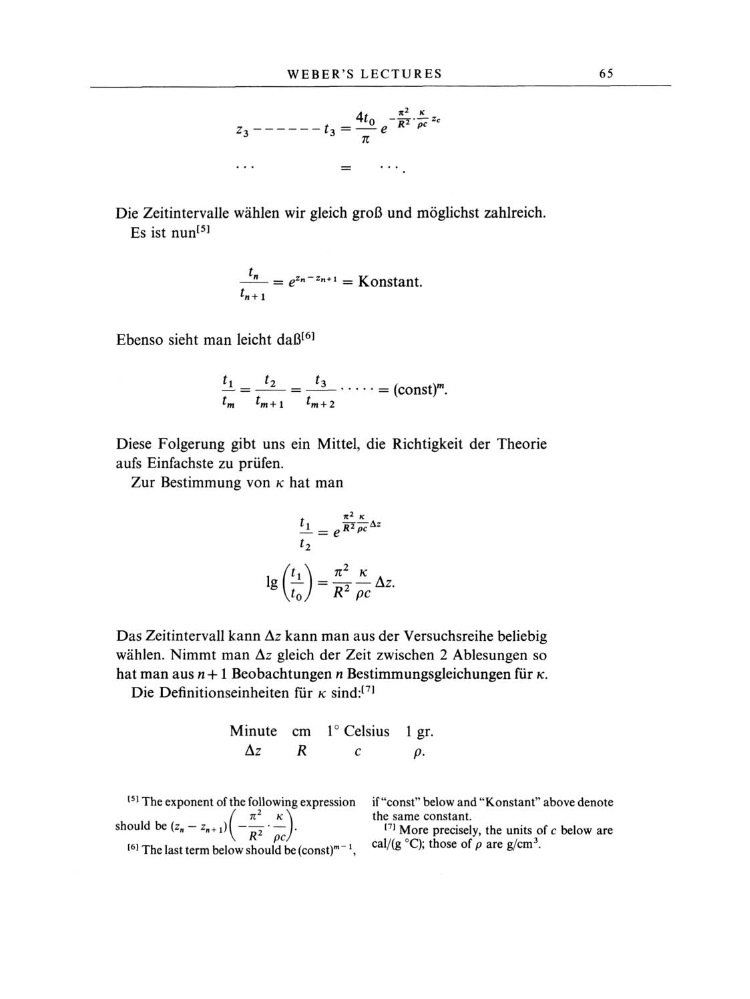WEBER'S LECTURES 65 t ^ At 11. ^C0 -|?2 K K2 pc ZC 71 • • • Die Zeitintervalle wählen wir gleich groß und möglichst zahlreich. Es ist nun[5] _ ez" zn+1 _ Konstant. ^n+ 1 Ebenso sieht man leicht daß[6] tx t2 t tm tm + 1 f m + 2 = (const)m. Diese Folgerung gibt uns ein Mittel, die Richtigkeit der Theorie aufs Einfachste zu prüfen. Zur Bestimmung von K hat man It* K h- = e&Tc^ *2 lg ( -^ - Az t0) R pc Das Zeitintervall kann Az kann man aus der Versuchsreihe beliebig wählen. Nimmt man Az gleich der Zeit zwischen 2 Ablesungen so hat man aus n + 1 Beobachtungen n Bestimmungsgleichungen für K. Die Definitionseinheiten für K sind:[7] Minute cm 1° Celsius 1 gr. Az R c p. [5] The exponent of the following expression should be (zn-zn+1)( - 2 1 R pci [6] The last term below should be (const)m-1, if "const" below and "Konstant" above denote the same constant. [7] More precisely, the units of c below are cal/(g °C) those of p are g/cm3.
